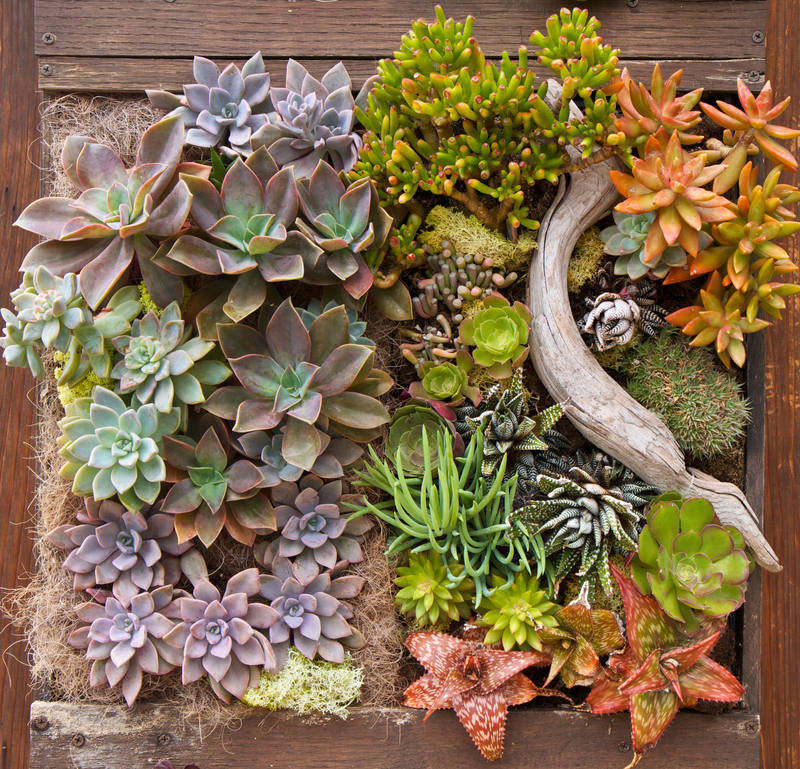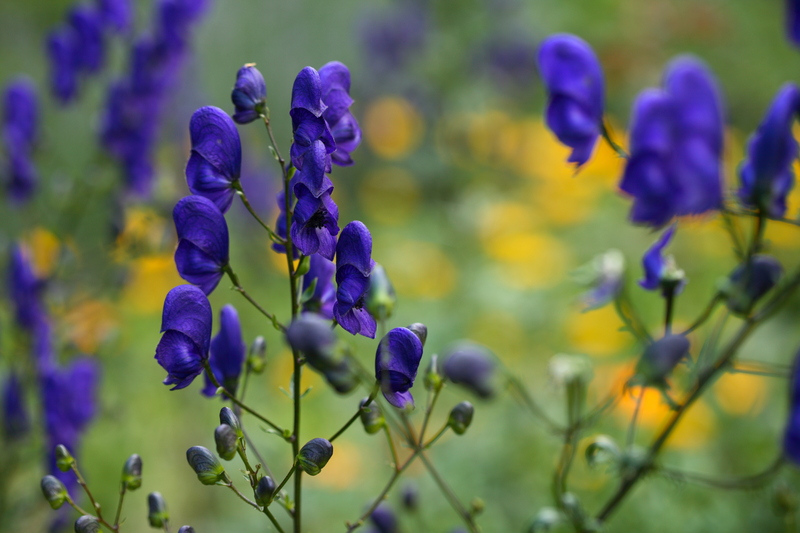Plants and Purpose: Gardening to Tackle Climate Change
Posted on 30/05/2025
Plants and Purpose: Gardening to Tackle Climate Change
In our rapidly changing world, the concept of gardening for climate change is blooming in popularity like never before. Gardens do far more than brighten our neighborhoods--they can be powerful tools in mitigating the effects of a warming planet. In this comprehensive guide, we'll explore the science of climate-conscious gardening, practical strategies for eco-friendly garden design, and how each of us can cultivate a garden with purpose to positively impact our environment.
Understanding Climate Change and the Gardener's Role
Climate change poses a monumental challenge to humanity. Global temperatures are rising, weather patterns are shifting, and biodiversity is noticeably declining. While large-scale solutions are imperative, individual efforts matter immensely. Purpose-driven gardening, sometimes called gardening against climate change, allows individuals and communities to make a genuine difference, one plant at a time.
How Do Gardens Affect the Climate?
- Carbon Sequestration: Plants naturally absorb carbon dioxide (CO2) from the atmosphere and store it as organic matter in stems, leaves, and roots.
- Cooling Effects: Through the process of transpiration, plants release water vapor, which cools surrounding air and soil.
- Improved Soil Health: Healthy soils capture and store more carbon, improve water retention, and foster biodiversity.
- Supporting Pollinators and Wildlife: Gardens offer vital habitats for pollinators and other wildlife that sustain ecosystems.
By intentionally selecting climate-resilient plants and sustainable gardening methods, gardeners can help reduce their carbon footprint and foster resilient landscapes that benefit both people and the planet.

The Purposeful Garden: Principles for Climate-Positive Gardening
Effective climate change gardening is rooted in a set of eco-friendly practices that emphasize sustainability and environmental stewardship. Explore the foundational principles that guide purposeful gardens.
1. Planting for Carbon Absorption
Not all plants have the same capacity for storing carbon. Trees are among the top carbon sequesters, but shrubs, perennial flowers, groundcovers, and even lawn alternatives also play a role. Endeavor to plant a variety of life forms for maximum carbon capture:
- Native Trees and Shrubs: Oaks, maples, pines, and native berry bushes store large quantities of carbon while supporting local wildlife.
- Grasses and Perennials: Deep-rooted prairie grasses such as switchgrass and big bluestem build soil organic matter and persist through drought.
- Ground Covers: Hardy ground covers reduce soil erosion and suppress weeds, keeping carbon locked in the earth.
Tip: Choose native species whenever possible--they are adapted to your local climate and require less water and fertilizer.
2. Adopting Water-Wise Gardening
With droughts becoming more frequent due to climate change, water conservation in the garden is essential. Embrace xeriscaping and other water-smart practices:
- Mulching: Add a thick layer of organic mulch to reduce evaporation, suppress weeds, and enrich soil.
- Rainwater Harvesting: Install rain barrels and direct downspouts into garden beds to maximize rainwater use.
- Drought-Tolerant Plants: Succulents, lavender, yarrow, and coneflower flourish with minimal water.
- Smart Irrigation: Use drip irrigation systems to target roots and minimize waste.
3. Promoting Biodiversity and Soil Health
A diverse garden is more resilient to pests, diseases, and weather extremes. Incorporate a rich mix of plant species and foster healthy soil life:
- Companion Planting: Pair plants with complementary characteristics to naturally resist pests and boost yields.
- Composting: Divert food scraps from landfills and return organic matter to the soil.
- No-Till Gardening: Minimize soil disturbance to promote heat-tolerant and water-efficient fungal networks.
- Wildlife Habitats: Include log piles, meadows, or bee hotels to support pollinators and insect predators.
4. Reducing Chemical Use and Garden Waste
Synthetic fertilizers, herbicides, and pesticides are often derived from fossil fuels and can harm beneficial insects, fungi, and soil organisms. Practice organic gardening to minimize your garden's environmental impact:
- Natural Pest Control: Encourage ladybugs, praying mantis, and birds that eat garden pests.
- Home-Made Remedies: Neem oil or soap sprays can help manage outbreaks with less environmental harm.
- Recycling Garden Waste: Turn grass clippings, leaves, and branches into compost or mulch to keep nutrients on site.
Climate-Resilient Plants: What to Grow
When it comes to gardening for climate change, plant selection is vital. Look for plants that can thrive in a warming world and support ecosystem adaptability. Here are some top picks for your climate-positive garden:
Top Climate-Resilient Trees
- Red Maple (Acer rubrum): Adaptable to varying soil conditions; a strong carbon sink.
- White Oak (Quercus alba): Supports hundreds of insect and bird species; deep, sturdy roots.
- Honeylocust (Gleditsia triacanthos): Tolerant of heat, drought, and poor soils.
Hardy Perennials and Grasses
- Switchgrass (Panicum virgatum): Tall, deep-rooted grass excellent for carbon capture and erosion control.
- Black-Eyed Susan (Rudbeckia hirta): Pollinator-friendly and drought-tolerant.
- Little Bluestem (Schizachyrium scoparium): Beautiful, resilient native grass for various soils.
Edible Plants with a Low Carbon Footprint
- Root Crops: Carrots, beets, and potatoes store carbon in their tissues and often require less fertilizer.
- Leafy Greens: Kale, spinach, and chard grow quickly and absorb significant CO2 in a short span.
- Legumes: Beans and peas enrich soil by fixing nitrogen, reducing the need for synthetic fertilizers.
Designing a Garden with a Purpose
Transforming your garden into a climate change solution is a matter of planning, research, and creativity. Here's how to get started:
Step-by-Step Guide to Climate-Positive Garden Design
- Assess Local Conditions: Know your hardiness zone, rainfall patterns, and soil type. Local extension offices or nurseries are excellent resources.
- Set Realistic Goals: Whether you want to grow food, increase biodiversity, or simply green your outdoor space, make sure your goals align with climate adaptation and mitigation.
- Use Layers: Mimic forests by incorporating canopy trees, understory shrubs, perennial flowers, ground covers, and vines. Layering increases biodiversity and carbon storage.
- Diversify Plant Selection: Favor native and drought-tolerant species, but don't shy away from experimental climate-adapted newcomers as your region changes.
- Commit to Ongoing Care: Sustainable gardens thrive with attentive management: monitor for pests, adjust watering strategies, and keep adding mulch and compost.
Gardening Techniques to Boost Climate Resilience
Mulching and Composting
Mulching provides thermal insulation, improves soil moisture retention, and feeds beneficial soil life. Composting not only diverts food waste from landfills but enriches gardens, replacing synthetic fertilizers with a renewable resource.
Rain Gardens and Permeable Surfaces
Install rain gardens in low-lying areas to capture runoff, filter pollutants, and recharge groundwater. Use permeable paths (stone, bark, gravel) instead of concrete to boost soil infiltration and reduce flooding risks from extreme rains.
Agroforestry and Food Forests
Consider elements of agroforestry--the interplanting of trees, shrubs, and crops. Food forests, which replicate natural woodland layers with edible plants, are a powerful way to maximize both carbon capture and homegrown nutrition.
Community Action: Scaling Up the Impact
While every home gardener plays a crucial role, collective action amplifies benefits. Consider joining or initiating community garden projects, schools, houses of worship, or urban pocket parks where many hands can green shared spaces. These efforts:
- Expand biodiversity corridors for pollinators and birds
- Disseminate climate-smart gardening ideas and best practices
- Offer opportunities for education and engagement across generations
- Build resilience into the entire community, not just individual properties
Gardens for Tomorrow: The Future of Climate Solutions
When you garden with intention, your work becomes a living part of the climate solution. Every garden--no matter how small--absorbs carbon, supports pollinators, and cools the earth. Amid the challenges of climate change, gardening with purpose offers hope, connection, and real-world results. Imagine streets lined with native oaks and rain gardens, city blocks softened by community vegetable beds, and front yards alive with birds and bees.
By adopting the principles of climate-positive gardening, you become a steward for our planet's future. Start with a single plant, experiment with new techniques, and share your journey. Together, our gardens can sow the seeds for a more resilient, *healthier world*.

Frequently Asked Questions About Gardens and Climate Change
How does gardening help tackle climate change?
Gardens capture and store carbon dioxide, improve air and water quality, reduce urban heat, support biodiversity, and empower individuals to make impactful, eco-friendly choices.
Which plants are best for a climate-resilient garden?
Choose a mix of native trees, deep-rooted grasses, perennial flowers, and drought-tolerant vegetables. Adapt your plant list as climate patterns shift in your region.
Is composting really effective for the climate?
Yes! Composting reduces landfill waste, cuts methane emissions, and returns valuable organic matter to the soil, fostering healthier, carbon-rich gardens.
Can urban gardening make a real difference?
Absolutely. Collectively, small spaces--balconies, rooftops, schoolyards--add up to greener cities with cooler microclimates and improved food security.
Conclusion: Growing Purpose, Growing Hope
A purposeful, climate-friendly garden is more than a collection of beautiful plants--it's an investment in the planet's future. By aligning our gardening practices with climate science, we create spaces that are beautiful, resilient, and impactful. From carbon capture to pollinator sanctuaries, our gardens are a beacon of hope in a changing world. Plant with purpose and be part of the solution, one leaf at a time.
Begin your journey with purpose today--because every plant matters in the fight against climate change.

